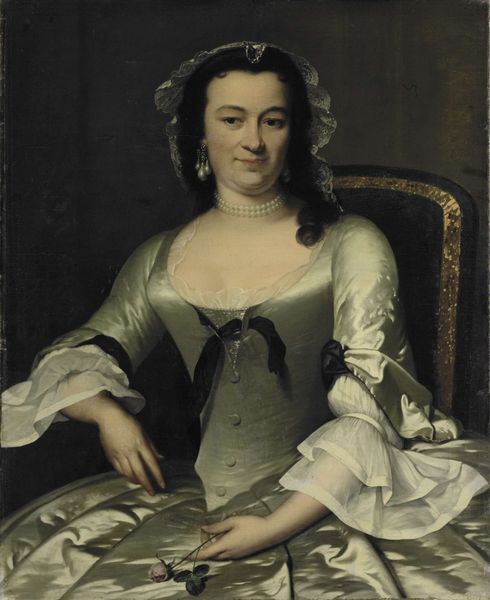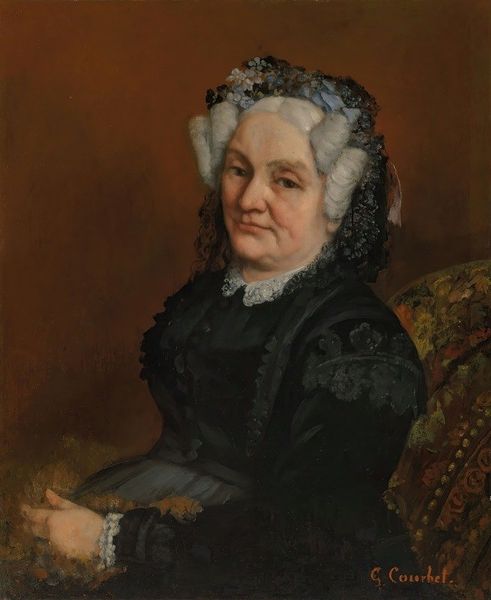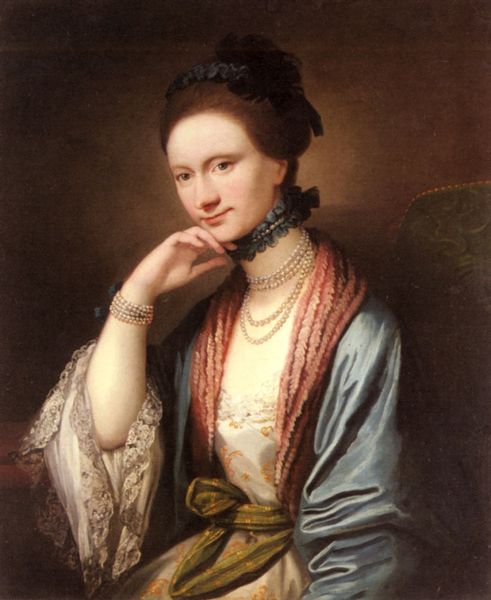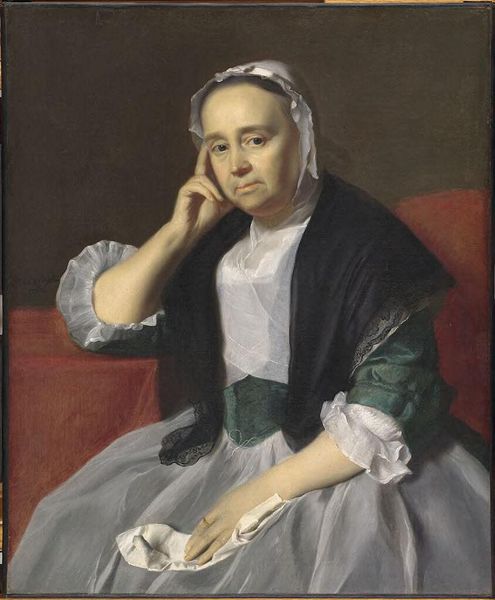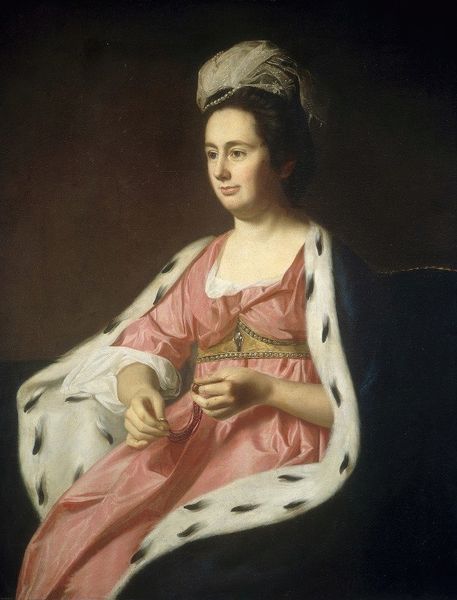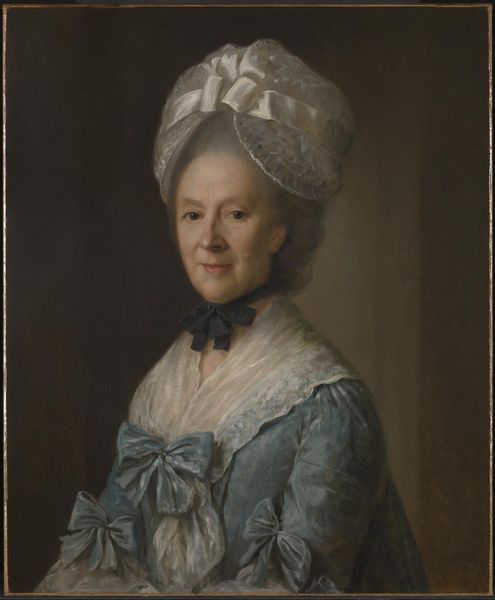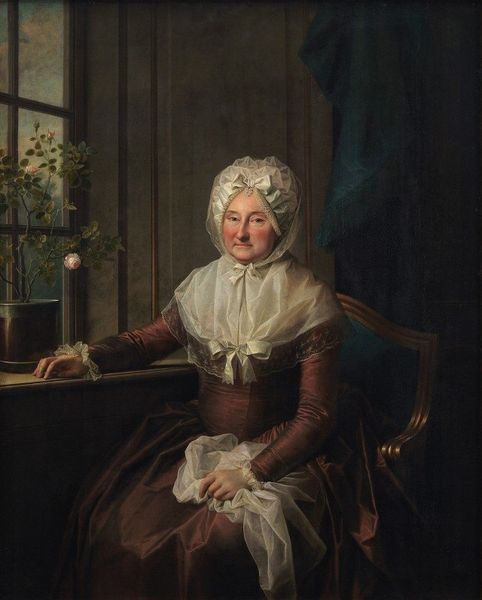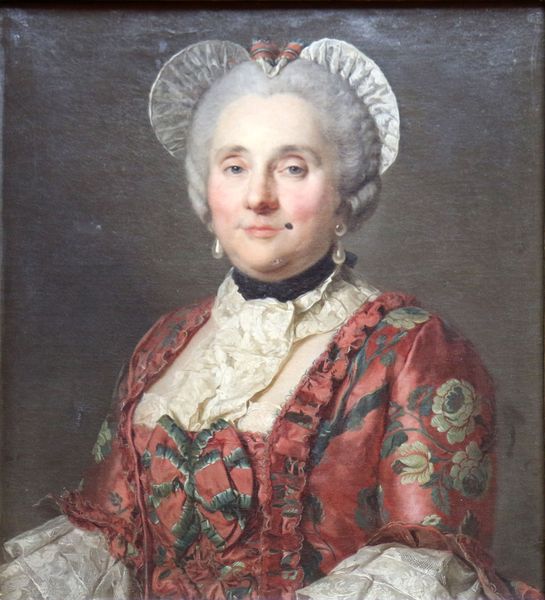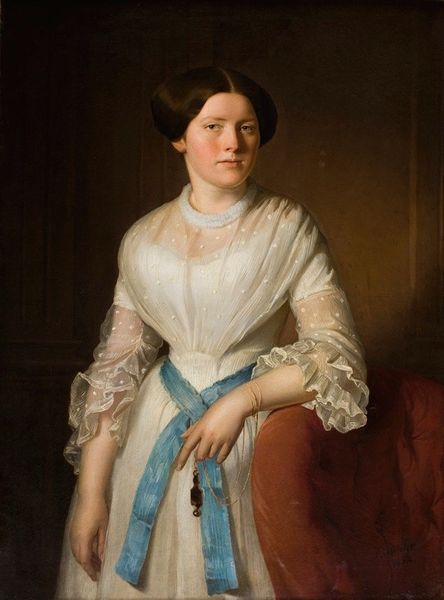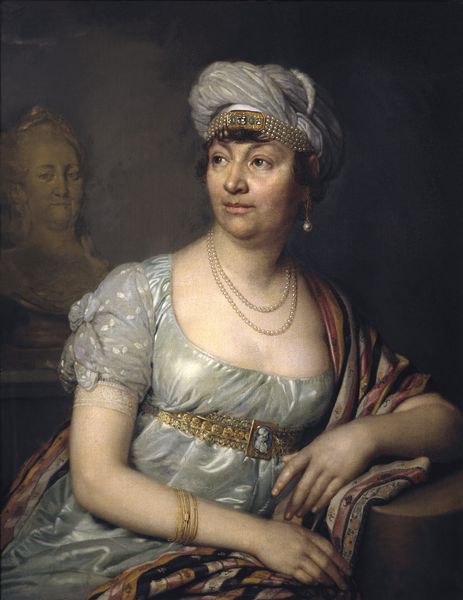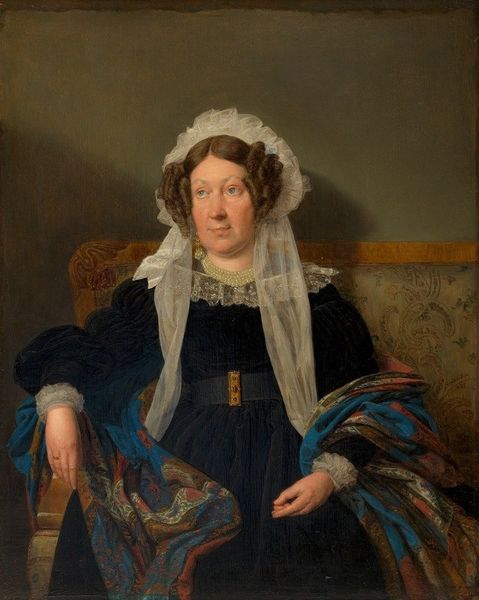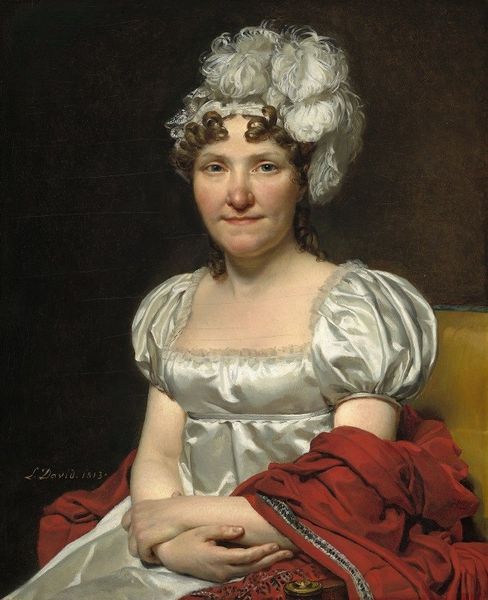
Copyright: Public Domain: Artvee
John Singleton Copley painted Mrs. John Winthrop, likely in the late 1700s, using oil on canvas. Look closely at the sumptuous fabrics depicted – the fine blue silk of her dress, adorned with delicate lace. These materials speak volumes about Mrs. Winthrop's social standing and access to transatlantic trade networks. The meticulous rendering of these textures, a hallmark of Copley's style, reflects not only his artistic skill but also the economic realities of the time, where luxury goods were potent symbols of wealth and status. Consider the cherries she holds, a seemingly simple detail. Fruit like this was imported, and would have been a signifier of seasonal dishes, wealth, and trade. It is a signifier of how her lifestyle was dependent on the work of others, probably enslaved. In this context, Copley's portrait transcends mere representation, becoming a window into the material culture and social dynamics of colonial America. It reminds us that even seemingly straightforward artworks are deeply embedded in complex systems of labor, politics, and consumption.
Comments
No comments
Be the first to comment and join the conversation on the ultimate creative platform.
